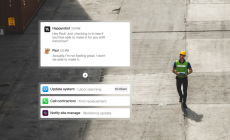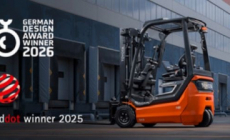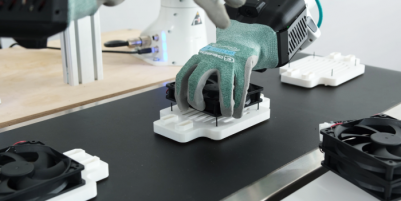-
AI startup Onton raises $7.5M to reinvent the way the world discovers and decides what to buy - November 26, 2025
-
Forklift Market Positions for Recovery as Confidence Expected to Build from 2026 - November 26, 2025
-
PROCare achieves 300% order capacity increase and 99% picking accuracy with Forterro’s ERP solution, Orderwise - November 26, 2025
-
DHL boosts operational efficiency and customer communications with HappyRobot’s AI Agents - November 25, 2025
-
STENA LINE TEAMS UP WITH CAMERA TELEMATICS TO DRIVE SAFETY IMPROVEMENTS AT IRISH SEA PORTS - November 25, 2025
-
Another design award for Toyota’s lithium-ion Traigo_i counterbalanced forklift - November 21, 2025
-
Stuut Technologies Raises $29.5 Million Series A Led by Andreessen Horowitz to Automate Accounts Receivable Work - November 20, 2025
-
INCREASED DIGITAL INVESTMENT REQUIRED TO KEEP PACE WITH 2026 CUSTOMS CHANGES - November 19, 2025
-
FULFILMENT SOLUTIONS FOR SPORTS MERCHANDISE: KEEPING OUR EYE ON THE GAME - November 19, 2025
-
COMPLEX, COSTLY & CONFUSING – THE END OF DE MINIMIS - November 19, 2025
Ctrack by Inseego has launched an AI dashcam that is designed to prevent incidents by tackling fleet risk as it happens. The Ctrack AI Camera combines forward-and driver-facing camera technology, using machine vision and artificial intelligence (MV and AI) to detect and help drivers self-correct dangerous or distracted behaviour. Fleets can now use the AI dashcam to improve road safety, better protect drivers and reduce associated insurance costs.
“We are using the latest advances in AI and machine vision to create intelligent vehicle cameras that have a positive impact on road safety,” explains Steve Thomas, Managing Director of Ctrack by Inseego. “Over 90% of crashes are a result of human error, so any technology that enables drivers to take corrective action and lessen fleet risk will deliver meaningful results. Our AI dashcams can help prevent collisions before they occur, so offer a clear advantage over traditional video telematics that simply record collisions.”
The forward-facing camera captures high quality footage of the road ahead, while the driver-facing lens provides a greater understanding of risky behaviour and distraction within the vehicle such as using a mobile device, eating and drinking, and eyes off the road. The MV-and AI-capabilities work together to identify and assess risk in and out of the vehicle, so the driver can be notified of any issues and footage uploaded to the cloud for review by the fleet manager, if required.
“What we have seen during our initial vehicle trials of the AI dashcam is a positive response from not only the fleet manager, who is gaining a more complete picture of risk, but also the driver. When asked for feedback, the overwhelming response from drivers is that any initial reluctance has been replaced by an understanding that the cameras are having a positive effect on risky driving habits and improving their safety,” concludes Thomas.

































